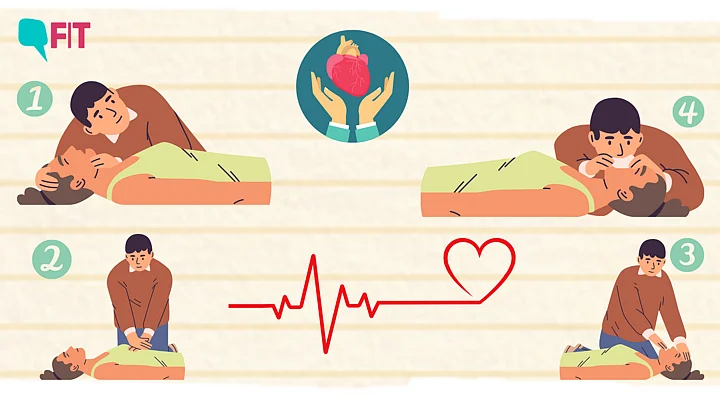In the last few years, we have been seeing increased news about the number of young people dying due to heart or cardiac-related issues. Heart diseases are the number one killer globally. But to be fair, it’s not really news for the medical world.
In 2004, the Indian Medical Journal had reported that the average age of Indians with heart diseases was 10 years younger than the same demographic in the western world.
So to put this in context, it's critical that we have a knowledge of the risk factors, what the symptoms and signs are, and when you need a medical professional to intervene.
What Leads to A Cardiac Arrest?
Up to 80 percent coronary cases show typical symptoms such as chest pain radiating to your arm with shortness of breath, sweating, and sometimes palpitations.
But some 20 percent cases might show atypical symptoms such as indigestion, back pain, or just feeling bloated.
The key is recognizing the risk factors, and signs and symptoms early on in order to avoid a massive cardiac arrest.
A cardiac arrest can take place when your heart stops functioning temporarily and the blood flow to your heart ceases.
So, if the blood flow to the circuits is interrupted, you might be affected by something called an arrhythmia, which is an irregular heartbeat.
When these irregular heartbeats are rapid, called ventricular tachycardia or ventricular fibrillation, the heart can not fill adequately. Without adequate forward flow, the entire body, including the heart and brain, will start to have life-threatening consequences.
In this situation of a life-threatening cardiac event with an arrhythmia and sudden cardiac arrest, can anything be done?
CPR To The Rescue
This is where Cardiopulmonary Resuscitation or CPR comes into the picture. With heart issues cropping up in an increasing number of people, the key is to have as many people trained in Basic Cardiac Life Support.
But interestingly, with time, the focus with CPR has shifted from the ABCs to compression. The compressions have to be at a certain rate, where you will move the blood along. Because as it turns out, breathing isn’t as important during CPR because you maintain a certain amount of oxygen in your lungs regardless.
However, there is a need to bring CPR awareness to public spaces, including schools and colleges, because the revolution starts with the youngsters.
The best way to go about this is doing so through the media the younger generation consumes. While they have advice and tips from the best doctors and experts just a few screen taps away, educating them about cardiac/stroke alerts and how to be first responders in times of need is of utmost importance. Teach them about the ABCs, the symptoms to look out for, and the preventive measures they can adapt for their lifestyle.
However, the critical detail is that you have six minutes before there is brain damage and brain death. So within that period, you have to get the heart's rhythm normalised or you need to keep the blood flowing until a true support system comes in.
Need Of a Robust System
But this is also where the problem arises in India. Be it courtesy of our road systems or our helpline numbers, the system is not robust enough for the patient to always get the support they need.
The balloon time, ie the time you have the heart attack to the time you get the necessary medical help, is longer than it should be.
This is exactly why it’s critical to have automatic external defibrillators positioned in all public venues.
What we are trying to do in India is push hard to reach a place where all public spaces, be it malls, corporate offices, schools, or residential societies, have CPR first responders.
This is what our system’s need is. Not just a first responder team that is trained in BCLS and recognising signs and symptoms of trouble, but also a robust system that can be relied on.
First Priority Should Be Prevention, Early Recognition, and Early Treatment
Globally, we’ve witnessed that with CPR, patients can actually go on to survive, albeit in slim proportions: the actual survival in in-hospital arrests is about 15 percent to discharge and even lower in the outpatient setting.
In the acute setting, if a patient is resuscitated and their rhythm is converted to a normal rhythm, there is a better chance of survival; this is the ultimate aim of CPR. But with good healthcare systems, it should never have to come to CPR.
It’s all about early prevention, early recognition, and early treatment.
People who are at risk should be identified before they have a full cardiac arrest.
You need to understand what the signs are, what tests you need to get done when you go to the hospital, which doctors/specialists you should consult, and whether you need something like an MRI or a CT Scan done.
Just recognising what the signs and symptoms are, when you need to go to the doctor, and what you need to do can change the outcome of your treatment dramatically.
In India, what we need is accessible healthcare and awareness that while CPR may work, it’s still only part of a bigger framework of healthcare that we need to learn about.
